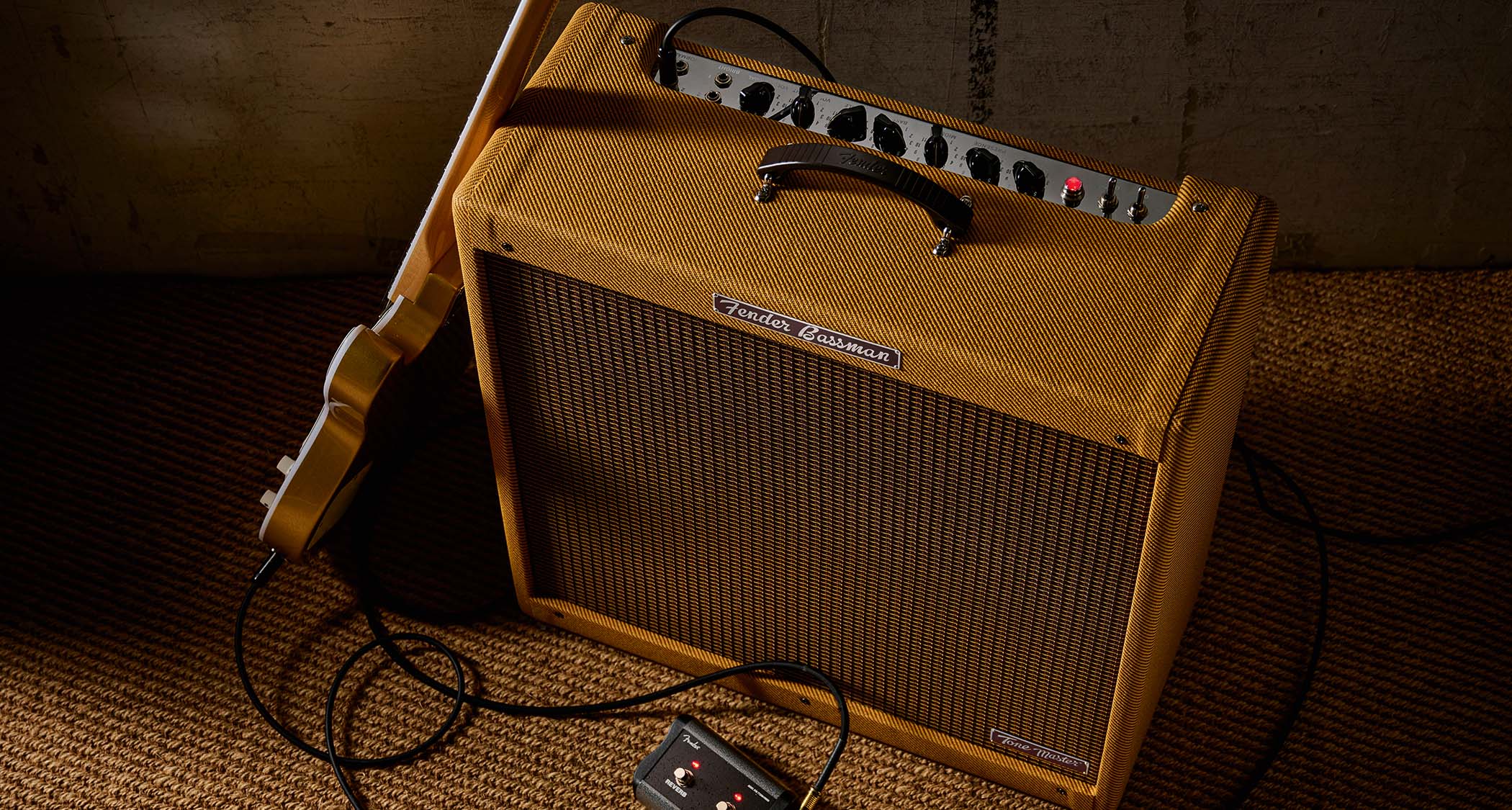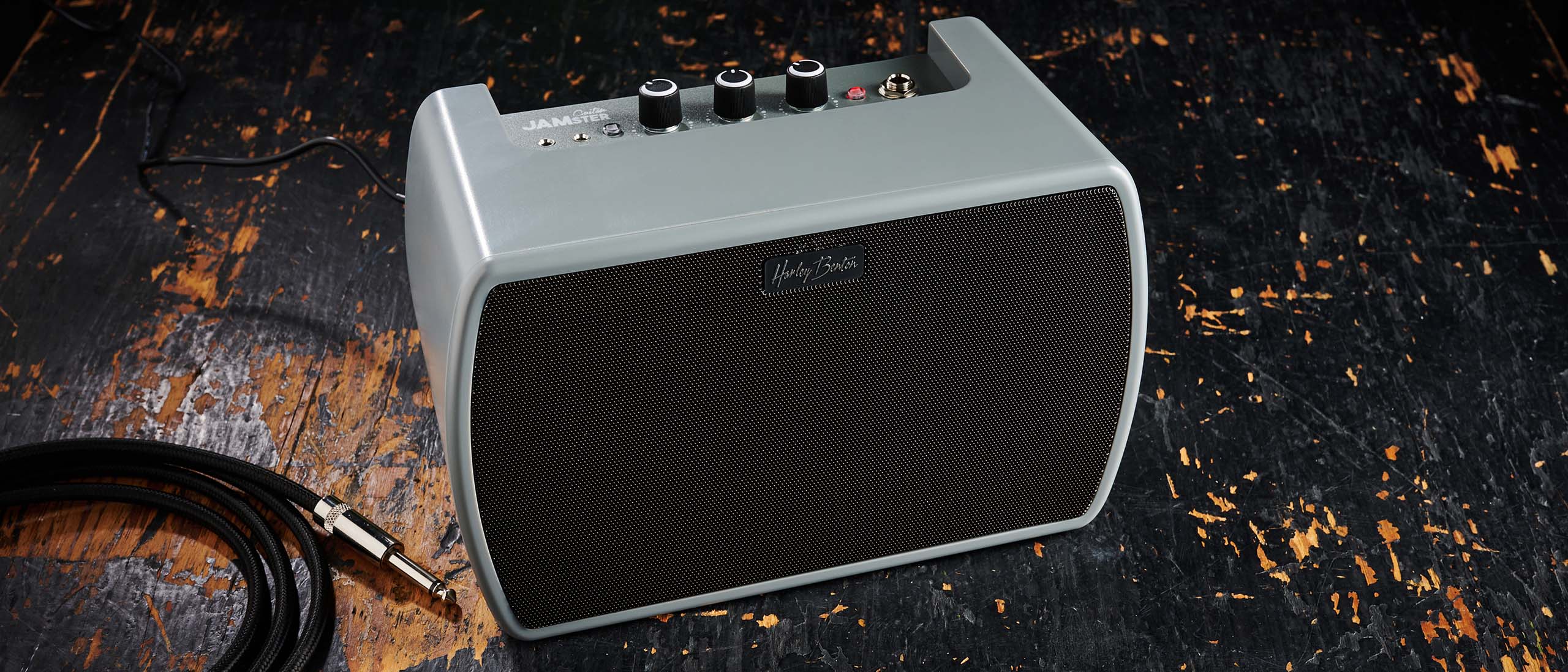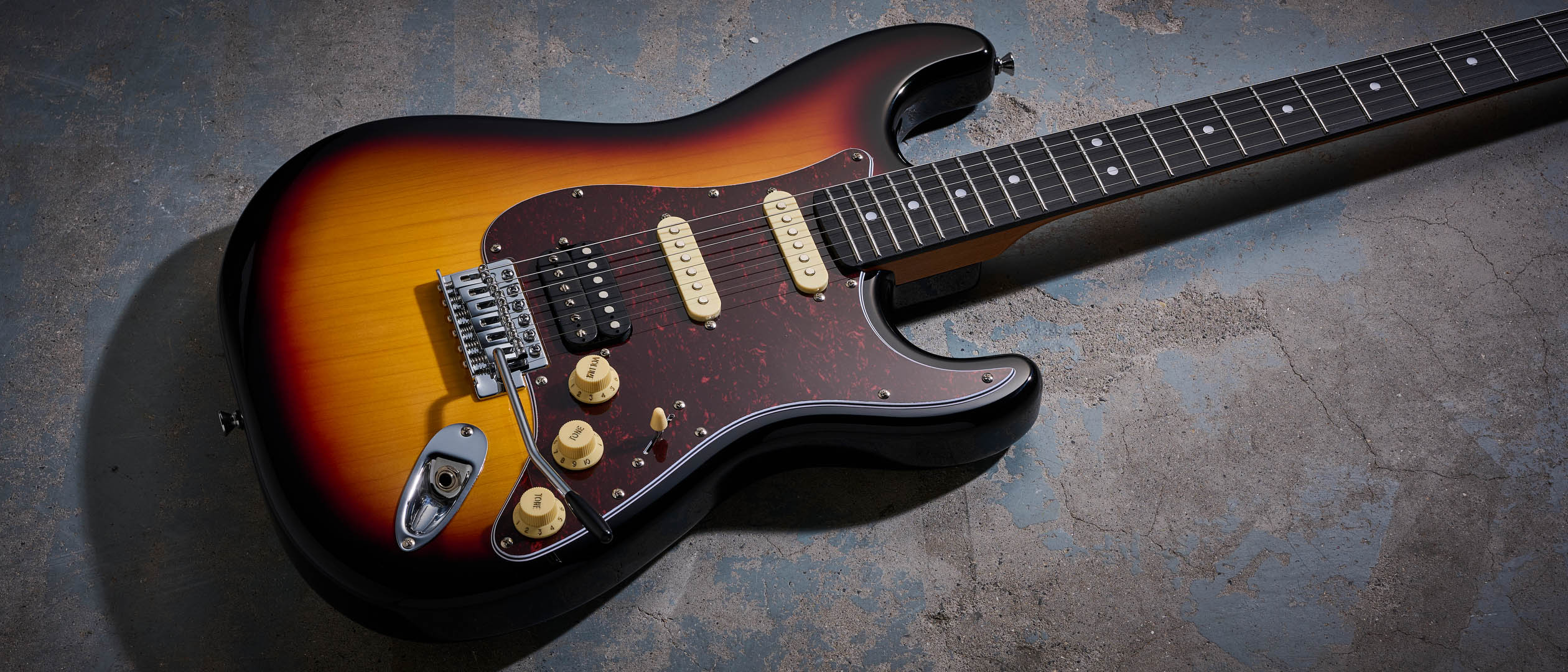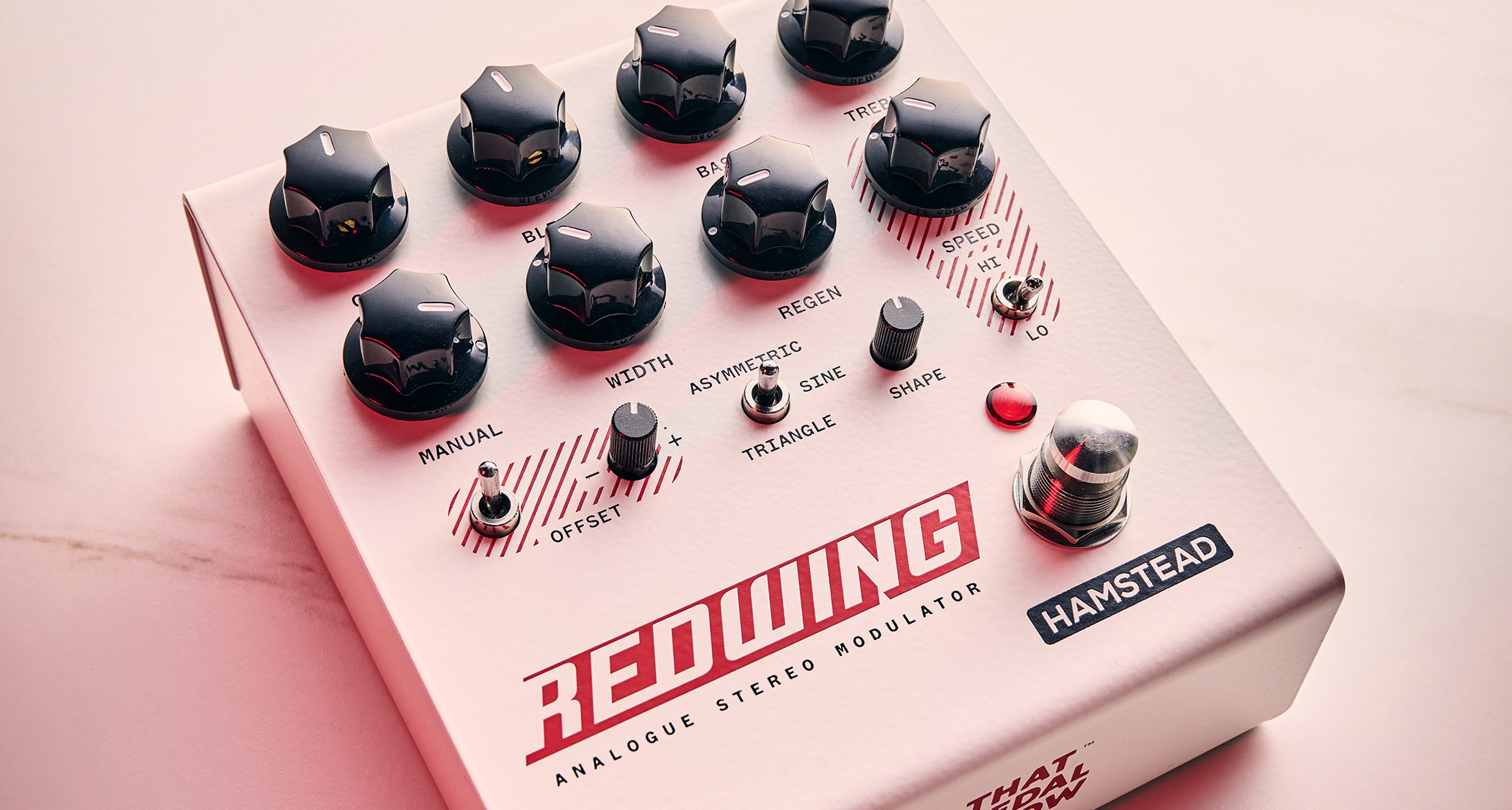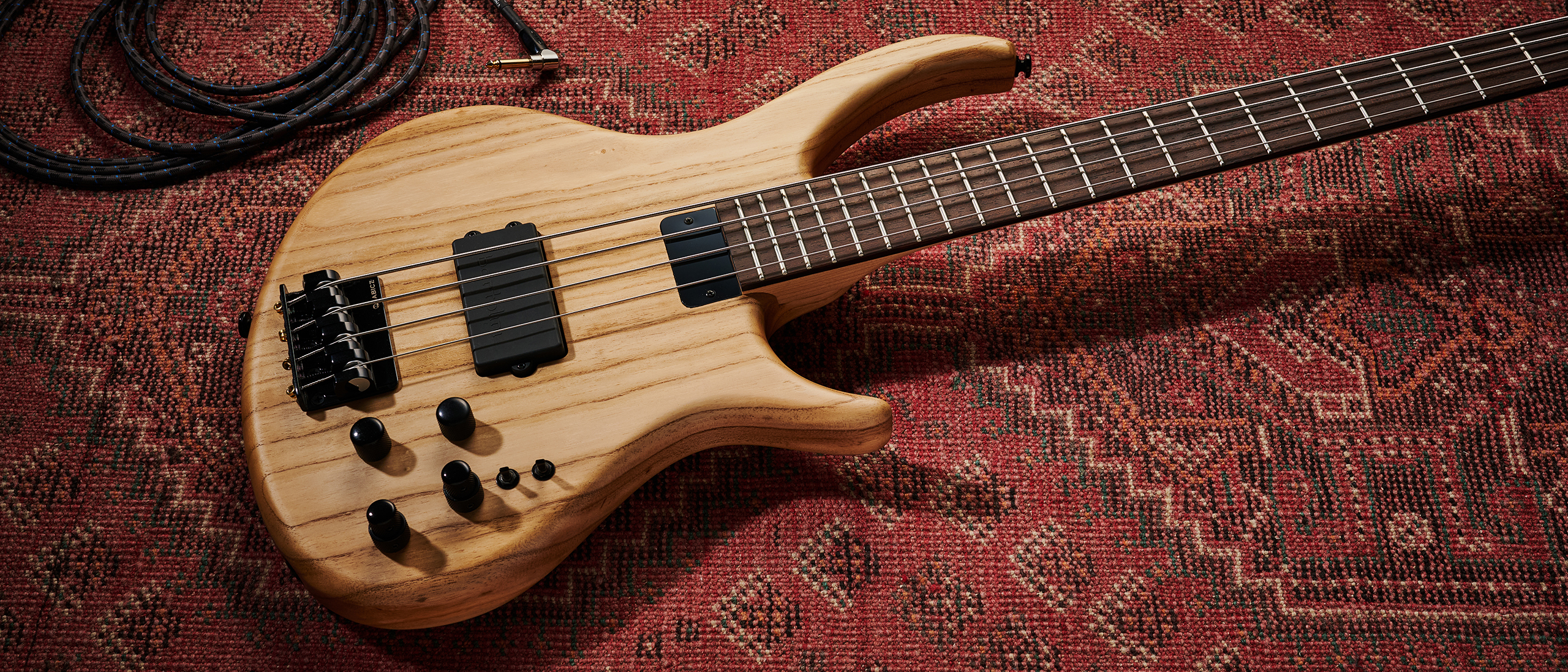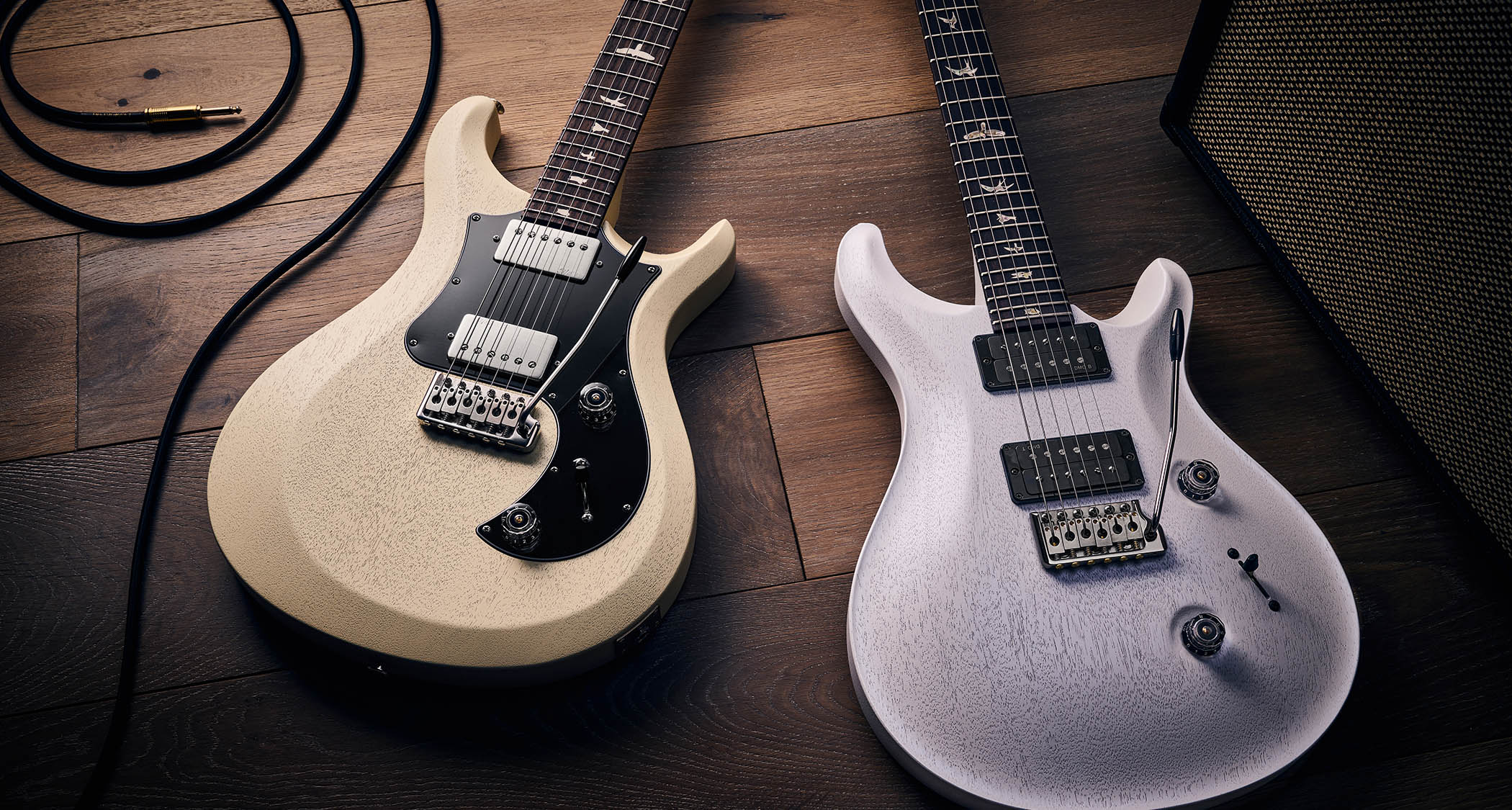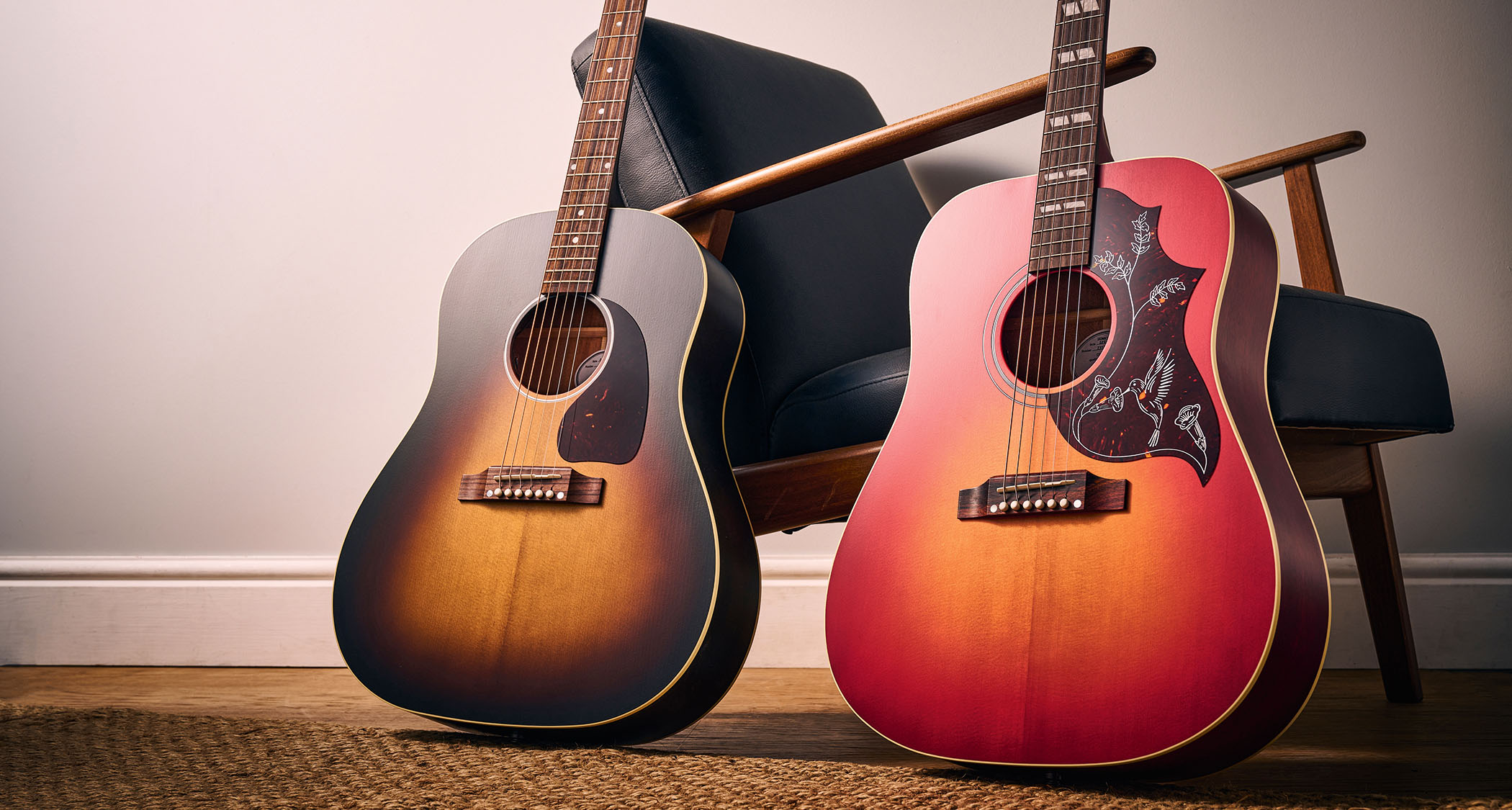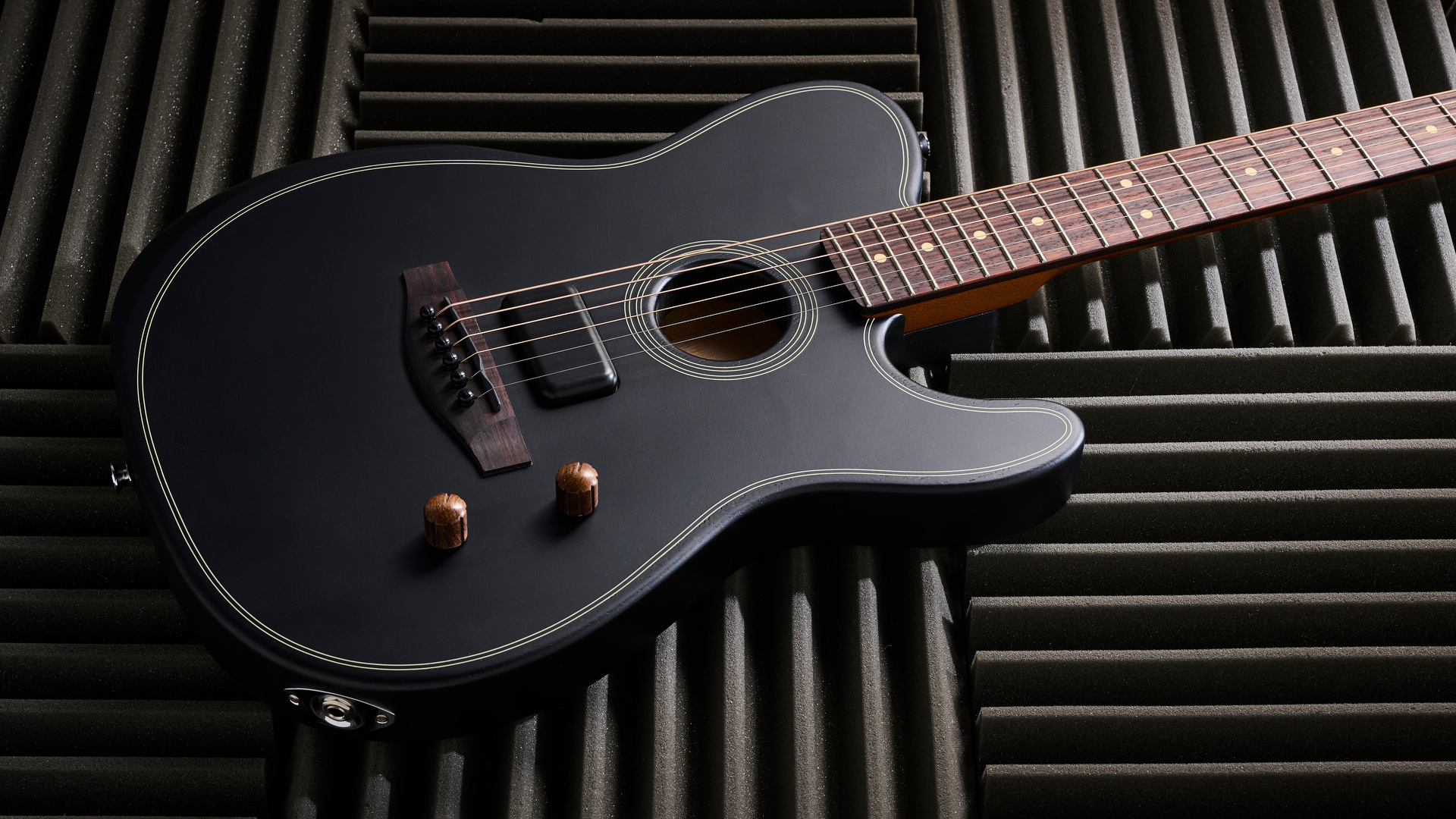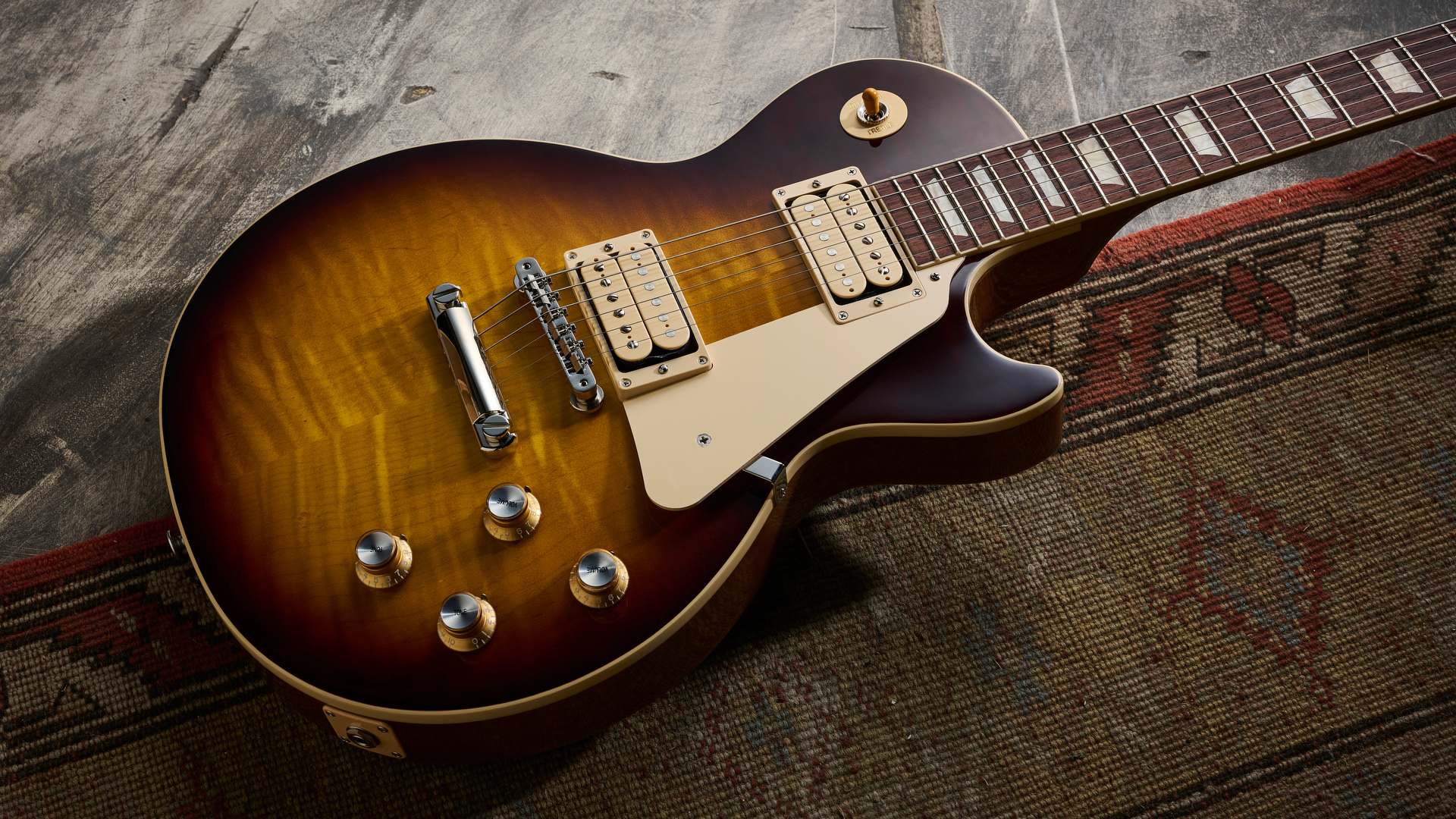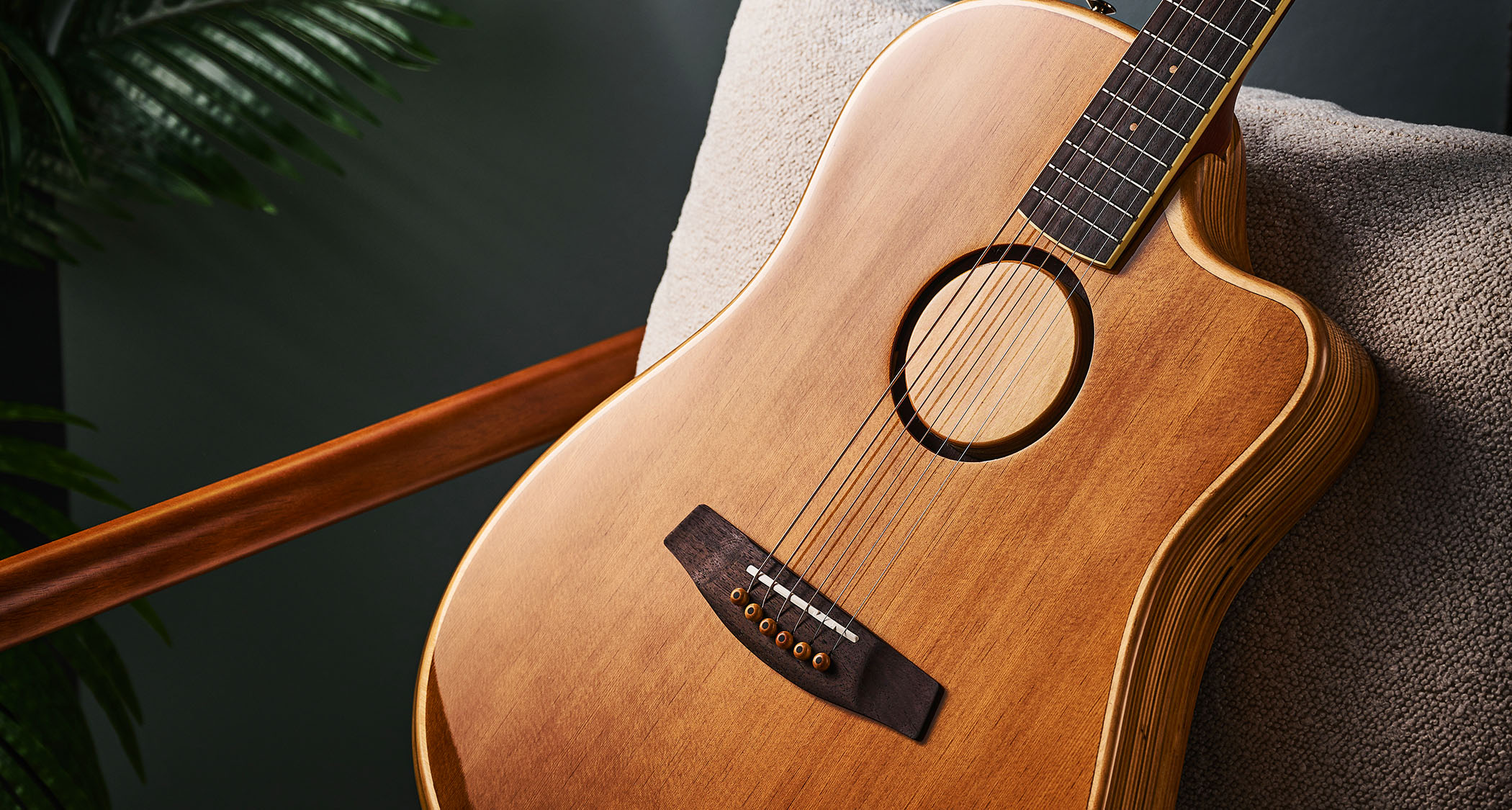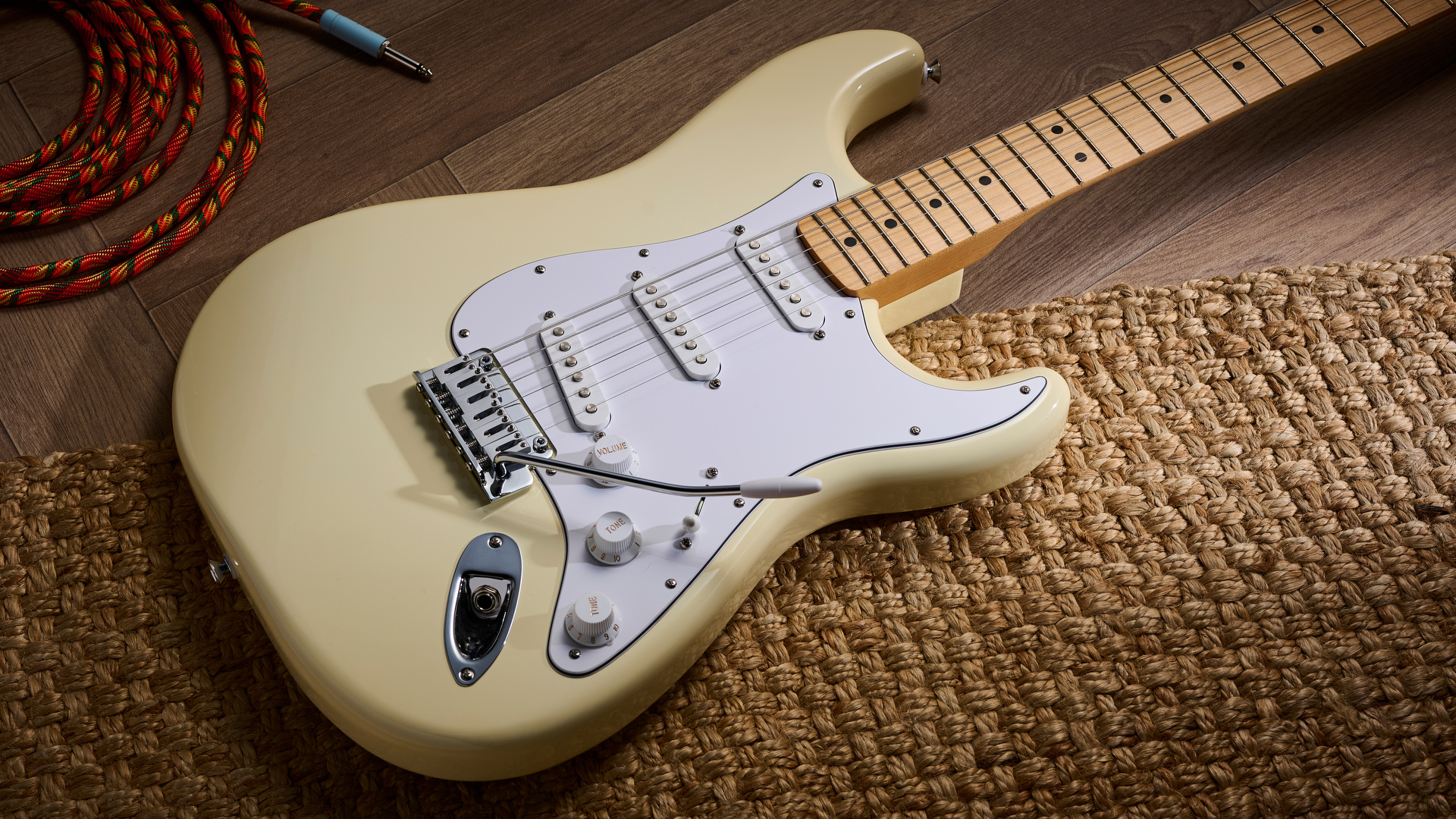Guitar World Verdict
Fender has produced a fantastic‑sounding, lightweight amp for stage, studio and home that brings the Bassman tone into the digital age. What’s more, the package is largely indiscernible from its mid-century forebear: this amp combines vintage sound and looks with digital features and convenience.
Pros
- +
Great tone, just like the original but with useful power scaling and IR outputs.
- +
The onboard convolution reverb is a welcome addition.
Cons
- -
Higher price than many digital amps.
- -
Reverb could have more depth.
- -
Some experienced valve users may notice a lack of power-amp sag at high volumes.
You can trust Guitar World
What is it?
The Fender Bassman is one of only a handful of historic amplifiers that have shaped the sound of the electric guitar as we know and love it. Since its release in 1952, the unmistakable throaty authority of the tweed 4x10 combo amp has had top players including such luminaries as Michael Bloomfield, Buddy Guy, Paul McCartney, Stevie Ray Vaughan and Eric Clapton enthralled.
The amp was so ubiquitous that Marshall used its two-channel, four-input design as a jumping off point for other classic amps in our hypothetical historic handful, starting with the JTM45.
Ken Bran leaned heavily into the Bassman’s circuit, albeit with UK valves and a UK-voiced tone stack, achieving a more aggressive midrange than Leo Fender would have ever allowed to leave the Fullerton factory. However, there are other things in heaven and on earth that Leo Fender may never have dreamed of, and perhaps the technological possibility of a fully digital Bassman may be one of them.
Fender has set a high bar here to produce a perfect replication of the original Bassman with modern enhancements. To that end, behold a beautifully lacquered tweed cabinet made of lightweight solid pine, loaded with a handsome set of grey-blue enamelled Alnico Jensen speakers, all topped off with a familiar chrome faceplate.
Visually, this amp is every bit as believable and authentic looking as its valve counterpart, save for the digital goodies on the back panel. Pick it up, however, and it’s a very different story: it’s so light you’d think they forgot the speakers. Lightweight is a very nice by-product of a valve-less, D2- design, not least for the ageing rockers among us. But that’s all well and good only if it sings!
Usability and sounds
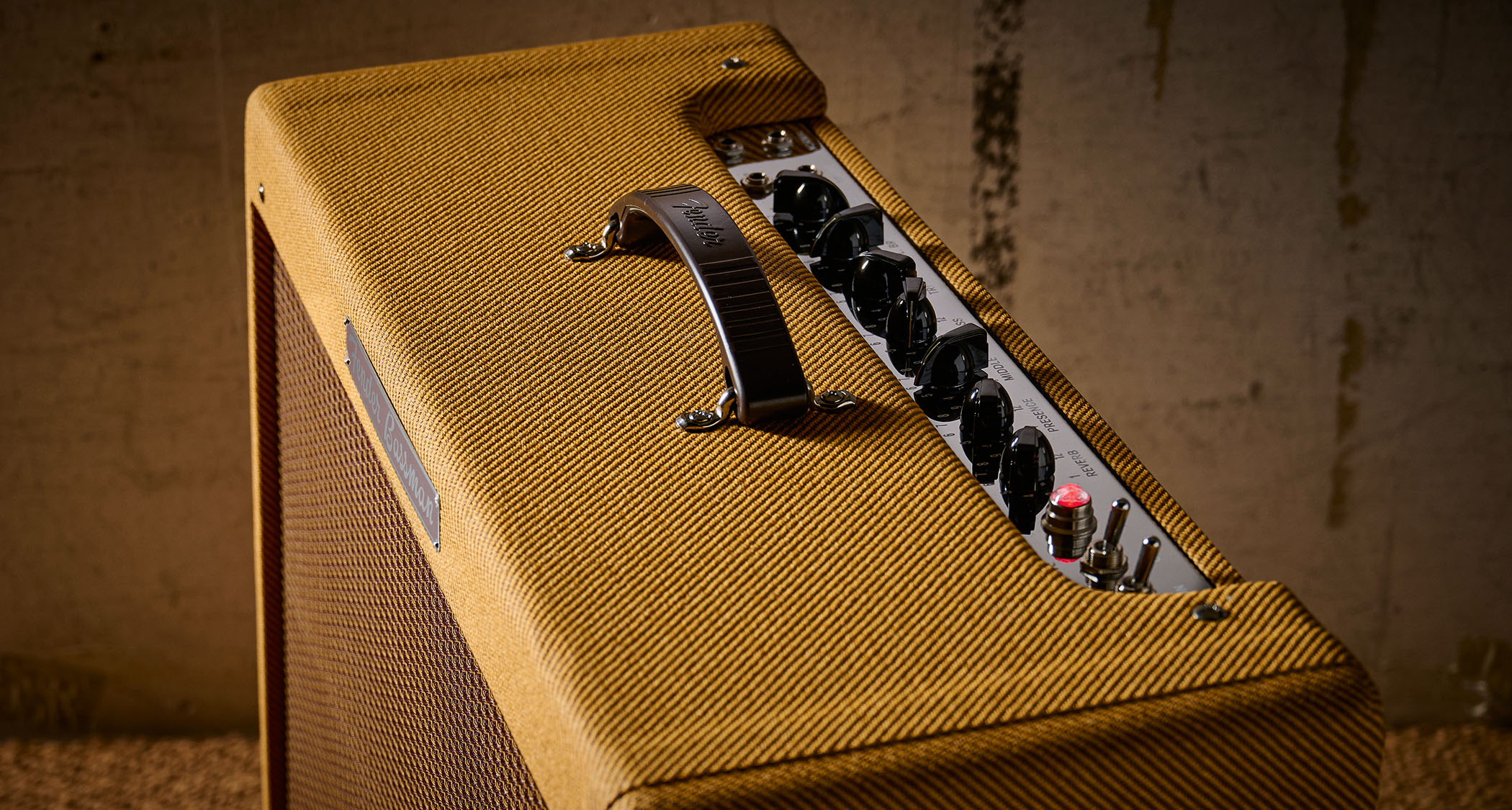
Firing up in standby mode, the corresponding jewel light changes colour from amber to green to indicate the amp is ‘warmed up’ (read: booted up) and we begin plugged into the Normal channel’s low-gain input with all the tone controls in the mid position. This neutral start point helps us establish what the cab and speakers are delivering.
Sat beside this new model here in our testing room we have a genuine vintage tweed Bassman as reference. We’re immediately impressed by the Tone Master’s valve-like top-end shimmer with a Strat. The ability to dial in a dose of spring reverb is a welcome feature never before afforded to this amp model. It’s a great-sounding emulation of a spring, though we noted that it didn’t perhaps extend to the fully wet drip some valve-driven reverbs exhibit.
Overall, tonally, the Tone Master has more brightness available than the original, which sounds darker and woolier with matched settings. That said, we actually enjoyed the slightly more articulate top-end available from the Tone Master.
A big advantage of the digital version is the ability to juggle the output power against the gain control to achieve your desired blend of saturation at any volume level
While the vintage Bassman power stage starts to sag and saturate subtly at volumes over 3, the Tone Master still pumps out bold power, albeit with a valve-like compression that begs for a few heavy-duty Stevie Ray Vaughan riffs.
A big advantage of the digital version is the ability to juggle the output power against the gain control to achieve your desired blend of saturation at any volume level. Further tailoring of the output by way of the back-panel mounted Vintage-Tight switch brings a touch of focus and definition, more useful at higher volumes.
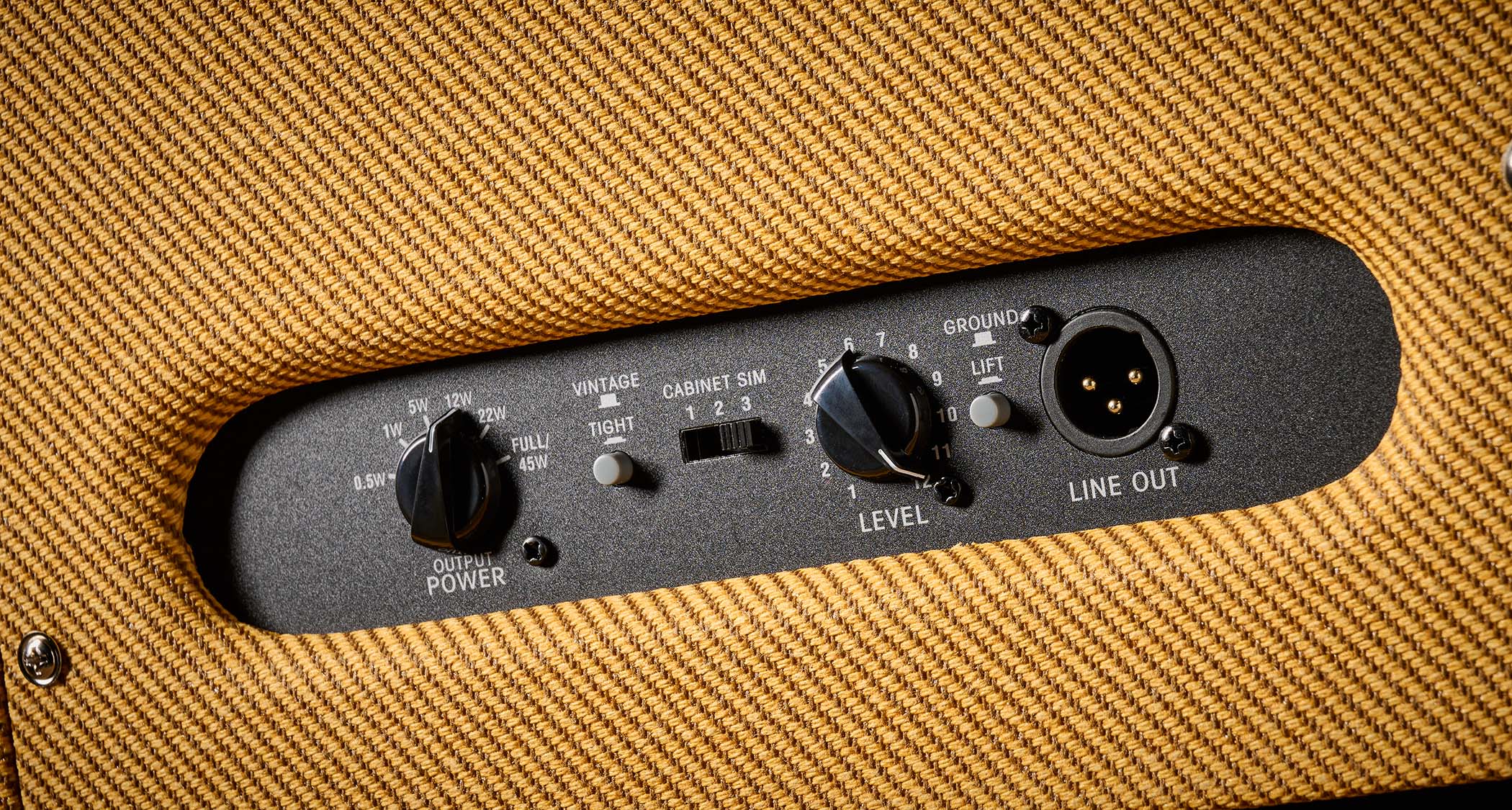
The original Bassman is known for getting along with all types of guitars and pedals, and this modern counterpart is a chip off the old block. It’s gratifying to learn that the ability to jumper the two channels together via a patch cable has been replicated here, allowing for all the tone-blending capability that brings.
The smooth character of the overdrive available belies its digital architecture and would surely outwit many valve purists in a blind test. The integration of an effects loop is a great addition to this amp, allowing for a connection to your time-based effects.
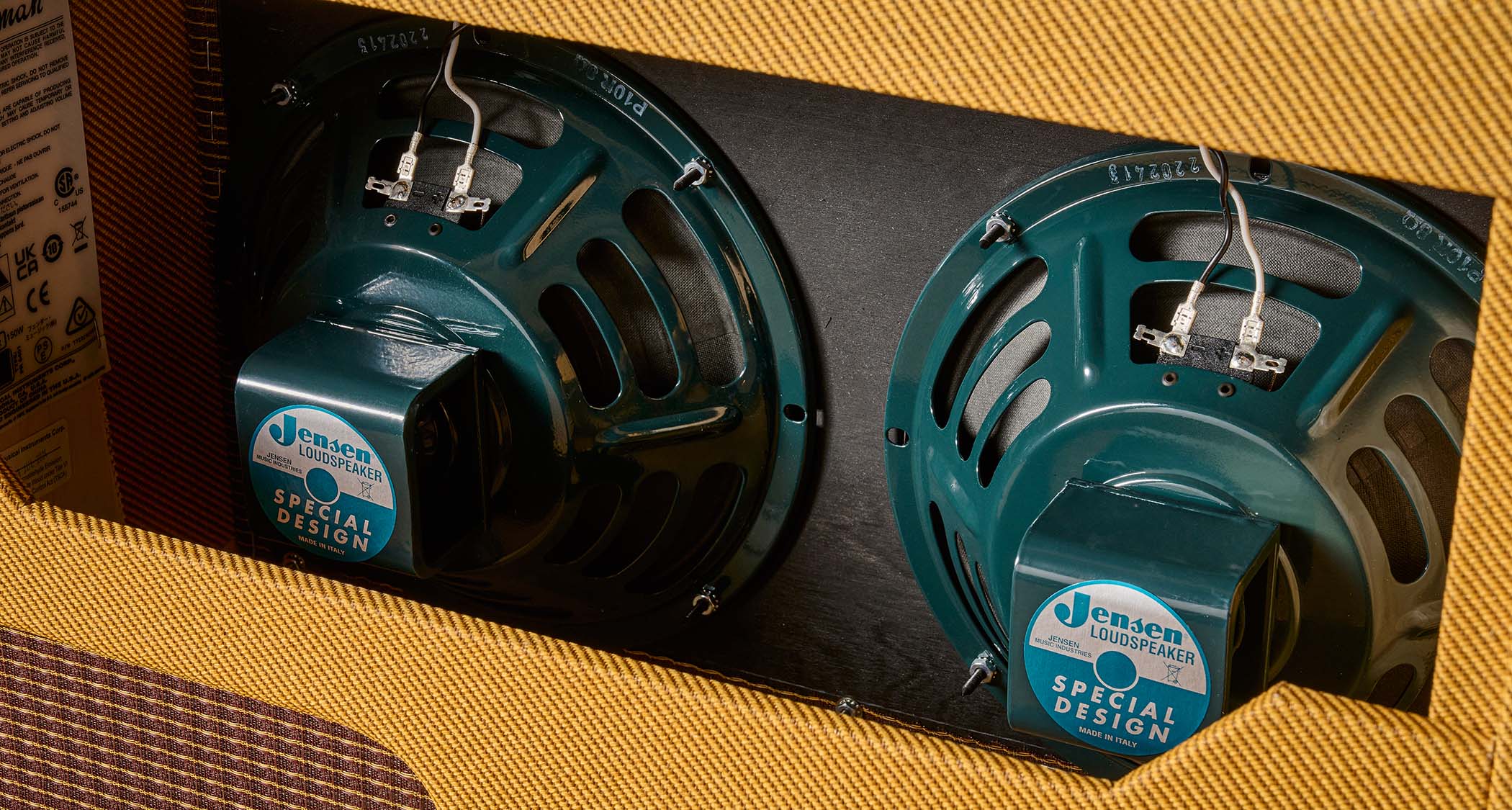
The Bright channel’s normal gain input reveals the extra potential of the Bassman to saturate in all kinds of pleasing ways, and this new model does exactly that. It’s a kind of classic overdrive mostly heard on the ’60s and ’70s recordings of the American blues greats, a softer midrange roar without the more pointed mids of the UK amps.
We had a chance to use this amp on stage for a theatre gig and it was immediately loved by the sound technician who got a great front-of-house sound by simply plugging his XLR lead into the cab IR output, sparing time for mic’ing up and the sound-spill that inevitably brings.
A difference in response between the Class D power and a valve power section could be marginally felt, though not particularly heard. The spread of the four speakers provided a gratifying dispersal of sound that filled just the right amount of stage.
Verdict
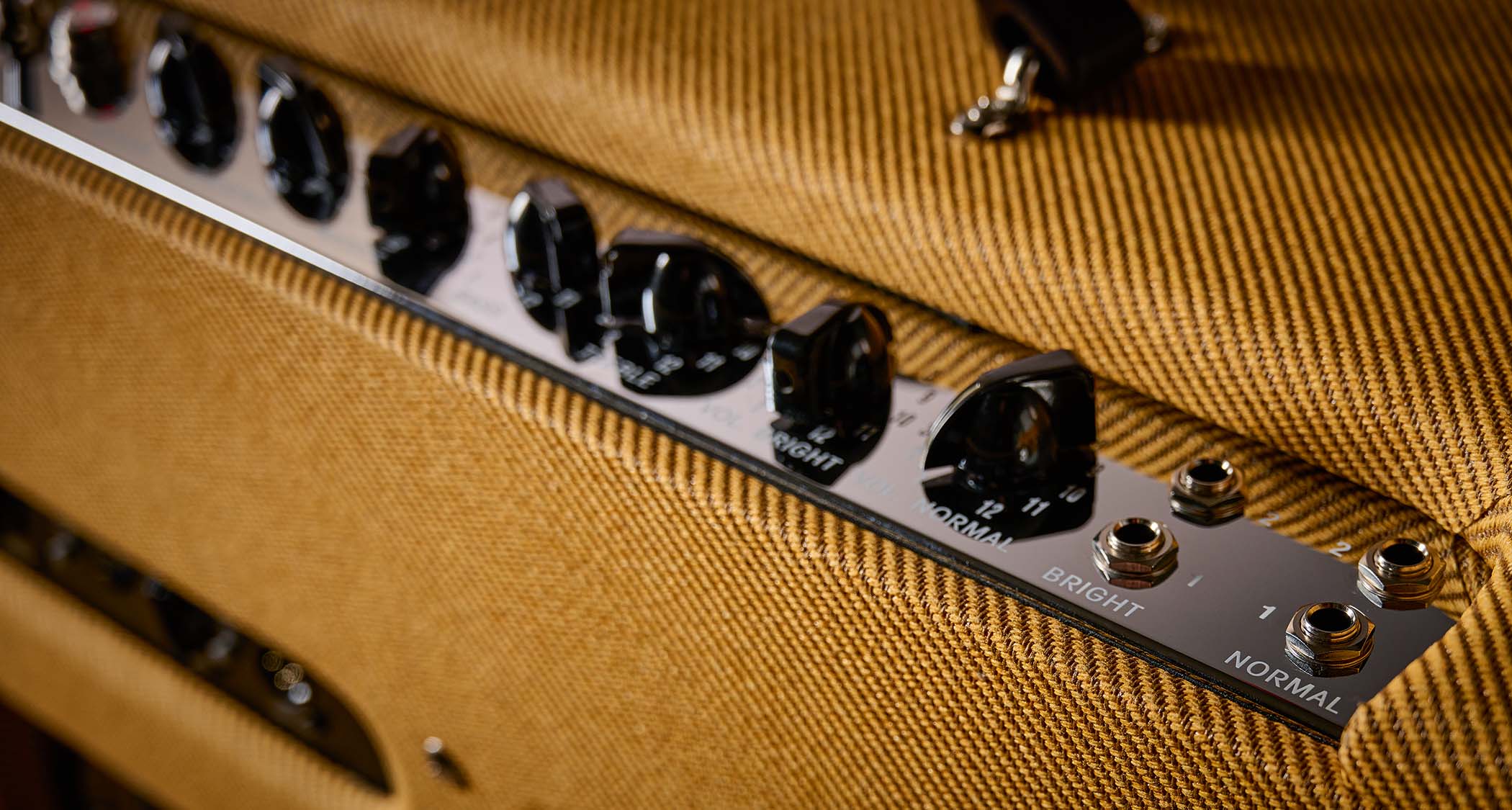
In many ways, this amp is far more versatile than its valve counterpart and we found it had much wider tonal versatility, too, especially thanks to the reverb that surely every original Bassman owner would put on their wishlist.
At lower volumes this amp can behave just as you might expect a tube amp to
Digital power has come a long way, and certainly at lower volumes this amp can behave just as you might expect a tube amp to. It may be argued that it doesn’t collapse under sound pressure exactly like valves, but this isn’t perhaps an amp that will be run on 11 in any case. The authentic pine and tweed cabinet, meanwhile, is certainly everything it should be, with its broad sound dispersal.
It’s worth noting that for an extra $600/£640 (and an extra 9.54kg!) Fender’s all-valve version is available, but you won’t have access to the cab IRs, reverb or power scaling we find on the Tone Master.
Guitar World verdict: Fender has produced a fantastic‑sounding, lightweight amp for stage, studio and home that brings the Bassman tone into the digital age. What’s more, the package is largely indiscernible from its mid-century forebear: this amp combines vintage sound and looks with digital features and convenience.
Specs
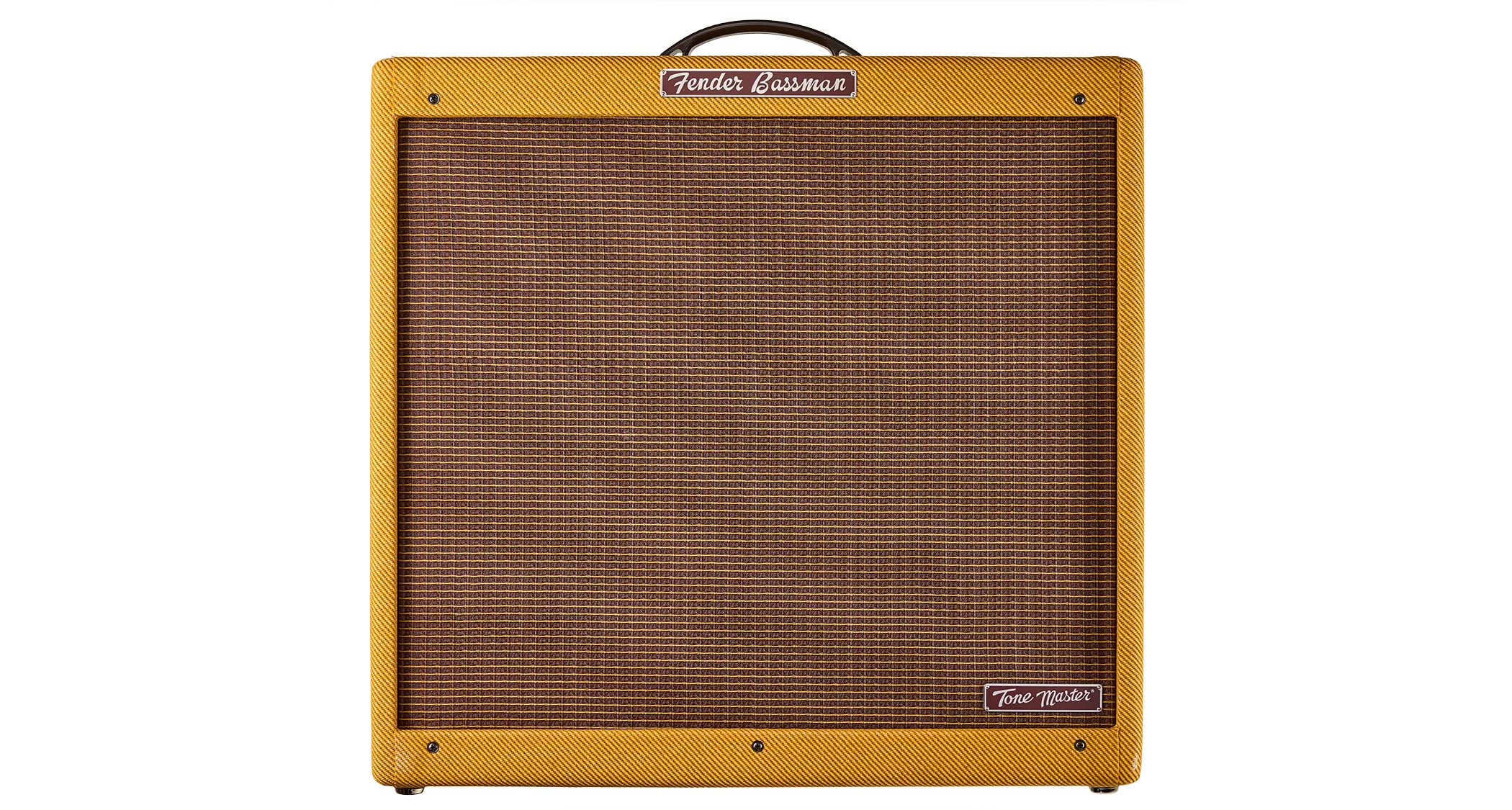
PRICE: $1,499/£1,429 (inc cover)
ORIGIN: China
TYPE: Digital combo amplifier
VALVES: None
OUTPUT: 45W (Class D) with power-scaling down to 0.5W
DIMENSIONS: 235 (w) x 269 (d) x 569mm (h)
WEIGHT (kg/lb): 14.5/32
CABINET: Lightweight solid pine w/ lacquered tweed covering
LOUDSPEAKER: 4x 10” Jensen P-10R Alnico speakers
CHANNELS: Normal and Bright channels, each with dual inputs
CONTROLS: Normal Volume, Bright Volume, Treble, Bass, Middle, Presence, Reverb
FOOTSWITCH: 2-button footswitch included
ADDITIONAL FEATURES: Effects loop, Vintage/Tight switch, line output w/ level control, 3-way IR cabinet simulation, 6-way power attenuation switch, USB port for firmware updates
OPTIONS: None
RANGE OPTIONS: The Tone Master range includes: Princeton Reverb (£829), Deluxe Reverb (£999), Deluxe Reverb Blonde (£1,059), Twin Reverb (£1,129), Twin Reverb Blonde (£1,309) and Super Reverb (£1,459)
CONTACT: Fender
Hands-on videos
Guitarist
Fender
Brett Kingman
In addition to reviewing gear for esteemed publications Guitarist and Guitar World, Martin produces bands and artistes including Jarvis Cocker, Richard Hawley and Mercury-prize winning Ben Ottewell (Gomez). As a professional guitarist for 40 years, Martin has toured with luminaries including Groove Armada and Skid Row.
Recreating sonic history continues to be a chronic fixation and Martin regularly broadcasts his exhaustively researched tone-chasing content to a YouTube community of Edward Van Halen devotees.
You must confirm your public display name before commenting
Please logout and then login again, you will then be prompted to enter your display name.
“For the price, it’s pretty much unbeatable.”: Harley Benton JAMster Guitar review
Mark Tremonti’s PRS signature amp is one of the best affordable high-gain heads on the market – and it just got one major upgrade
“These measures threaten the economic and cultural impact of U.S.-made musical instruments”: NAMM president responds to Trump's tariffs – urgently urging the administration to exempt the musical instrument market
